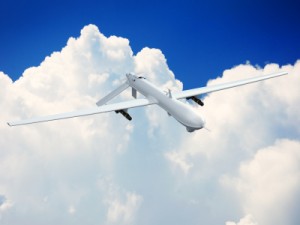It is becoming increasingly clear that rapid technological innovation will be the defining characteristic of the twenty-first century. In most ways, new technologies are improving our lives, and they are also creating brand new growing industries that could be our best hope for rejuvenating the world economy.
But there is one disturbing aspect to all of this. The proliferation of digital and electronic technologies is making it more difficult to protect our privacy, as the surveillance society imagined by George Orwell in his classic dystopian novel 1984 is now becoming a reality. Internet spyware, hidden cameras in stores and on street corners, scanning and X-rays in airports, the rapid spread of GPS tracking, instantaneous tracing through cell phone or credit card usage, RFID chips that can be implanted beneath the skin, satellites that can zoom in close enough to recognize faces – these are all a part of our evolving reality, and privacy is becoming an increasingly rare commodity as a result.
Given the oaths of fealty our politicians are constantly swearing to the Constitution, one would expect our elected leaders to be raising their voices in protest against this collective threat to our Fourth Amendment rights. But to the contrary, even though technologies that facilitate discrete and pervasive surveillance invite abuse on a potentially massive scale, instead of trying to protect us from this clear and present danger, Congress is actually doing everything they can to make it easier, not more difficult, for government and private institutions alike to monitor our every move.
 This was demonstrated recently in a very dramatic way, when the Senate, by a margin of 70 – 25, approved a bill called the Federal Aviation Administration Reauthorization Act, which was subsequently signed into law by President Obama on February 14. While the primary purpose of this legislation is to improve air safety by requiring the airline industry to switch from radar to GPS for air traffic control and landing guidance, the new law contains a secondary provision that could have significant privacy-related ramifications. By September of 2015, the FAA will be required to open airspace all across the nation to unmanned aerial vehicles, which are more commonly known as drones. For those who are not familiar with this technology, these remote-controlled flying machines have the potential to be the most efficient and effective surveillance tools that have ever existed on planet earth.
This was demonstrated recently in a very dramatic way, when the Senate, by a margin of 70 – 25, approved a bill called the Federal Aviation Administration Reauthorization Act, which was subsequently signed into law by President Obama on February 14. While the primary purpose of this legislation is to improve air safety by requiring the airline industry to switch from radar to GPS for air traffic control and landing guidance, the new law contains a secondary provision that could have significant privacy-related ramifications. By September of 2015, the FAA will be required to open airspace all across the nation to unmanned aerial vehicles, which are more commonly known as drones. For those who are not familiar with this technology, these remote-controlled flying machines have the potential to be the most efficient and effective surveillance tools that have ever existed on planet earth.
Watch the Skies!
Like so many other revolutionary technologies, unmanned aerial vehicles were first developed by the US military for use in combat missions. Drones that can be guided from a distance by remote control are an effective way to reduce casualty levels among pilots and flight crews, and as these flying machines have become more sophisticated the ideas for how they might be put to use for non-military purposes have been growing. While drones were exclusively airplane-sized in the past, they now come in many shapes and varieties, and some are so small they could easily be mistaken for birds if seen at a distance. Drones are now being outfitted with the most refined surveillance technology available, including night vision, video analytics that can identify and hone in on suspicious behaviors, massive zoom, see-through capacity, and facial recognition software that can allow particular individuals to be spotted and tracked wherever they go. Drones are proving to be ideal platforms for exotic technological developments of the kind usually seen only in science fiction movies, and their potential to be used for the purposes of targeted and refined surveillance is virtually unlimited.
Bombshell New Book Reveals… How To Survive The Coming Martial Law In America/span>
At the present time, drone use in US airspace is restricted to certain areas, mainly military flight zones and regions of the US-Mexican border, where the Department of Homeland Security has deployed nine surveillance drones to help monitor the illegal trade in narcotics. But the unmanned aerial vehicle industry has been pushing hard to promote the technology for further domestic use, and law enforcement agencies in particular have been showing a great deal of interest. It is important to note, however, that the new FAA regulations will require air space to be made available for privately-owned drones as well as any that are being operated by state, local, or federal government agencies, so the police are clearly not the only ones interested in drone technology.
Backers of domestic drone deployment swear these flying surveillance boxes will mostly be used to supplement traditional security and safety-related activities, such as routine police patrolling or fire detection. But the problem is that drones can be used to monitor just about anything or anyone, and in the end there will be no one there to watch the watchers to make sure they are staying within the bounds of propriety. Law enforcement fishing expeditions are likely to become routine if drone use becomes commonplace, and people could suddenly find themselves receiving tickets or citations right and left for even the slightest offenses. This activity alone could be turned into a moneymaking racket by police departments and court systems everywhere looking for an easy source of funds. In addition, the FBI’s notorious campaigns of harassment against social activists and protestors could be stepped up, as anyone with the courage to show up at a protest march or rally could be photographed and tracked surreptitiously from that point on.
While the drone industry and the law enforcement agencies who want to use them are giving facile assurances that these flying super spies will only be used to supplement existing police practice, because drones guarantee their users complete secrecy the potential for abuse is simply too strong for us to take anyone’s word for anything. And what about the provisions in the new bill that will make airspace available for privately-owned drones – just what exactly will these drones be used for anyway? Will they be used as a more intensive, real-world version of Internet spyware, analyzing our every move and collecting all kinds of personal information so that their owners will be able to target us with their unwanted sales pitches? Or could they be used for even darker purposes such as stalking or harassment by wealthy but unscrupulous individuals with their own sick personal motives?
The Fourth Amendment in the Twenty-First Century
When the Bill of Rights was first written, its authors used language that was appropriate for the time and place. But in assessing what a document like this really means, we must be sure to observe not just the letter of its prescriptions, but also the spirit that motivated them. More than 200 years after its words were first put on paper, government and private interests alike have now gained the ability through technology to flaunt the Fourth Amendment and routinely violate our persons, houses, papers, and effects from a safe distance without our consent. So even though the authors of the Bill of Rights could not possibly have foreseen the need to include language in this document that would have prohibited perpetual remote random surveillance of the American people, it is hard to see how any politician worth his or her salt could argue that unleashing domestic drones on the populace does not violate the spirit and the deeper intent of the Fourth Amendment. And yet, they are planning to let the drones loose on us without even so much as a whisper of protest or concern.
Despite claims to the contrary, like the Patriot Act and the National Defense Authorization Act before it the new Federal Aviation Administration Reauthorization Act appears to represent nothing more than the continued erosion of our Constitutional rights and protections, hidden beneath facile assurances of good will and good intent. But as many wise people have pointed out, the road to tyranny is paved with good intentions.
©2012 Off the Grid News
 Off The Grid News Better Ideas For Off The Grid Living
Off The Grid News Better Ideas For Off The Grid Living




